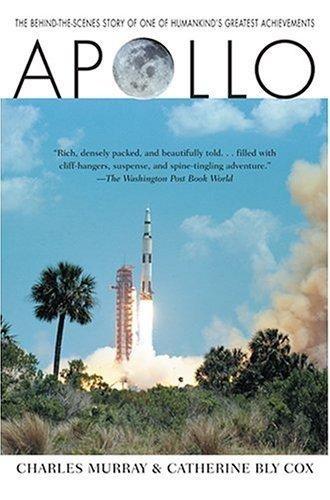
Apollo
by
Charles Murray
and
Catherine Bly Cox
Published 1 Jan 1989
Gilruth had discovered that Faget had told people at headquarters that the Space Task Group wasn’t interested in lunar-orbit rendezvous, and he was uncharacteristically abrupt: It wasn’t Faget’s prerogative to tell them that, Gilruth recalled telling the designer—and besides, they ought to be looking hard at L.O.R. themselves. Later, Gilruth would say that it wasn’t until he became convinced that lunar-orbit rendezvous would work that he truly began to believe that they could get to the moon by the end of the decade. Al Kehlet and Chuck Mathews began some new in-house analyses for the Space Task Group on the lunar-orbit rendezvous option and convinced themselves that there was a lot to it.
…
By the middle of 1959, they were already concentrating on how to get to the moon. [* Historians have found earlier references to the lunar-orbit rendezvous concept. Yuri Konratyuk, a Russian rocket theoretician, had written a paper suggesting an analogous scheme back in 1916, and H. E. Ross, a British scientist, had described one in 1948. The people who worked on the lunar-orbit idea in the 1950s do not seem to have been aware of this work. Dolan’s team gets credit for being the first to propose lunar-orbit rendezvous after a lunar landing became a live technological possibility.] The chief barrier to getting to the moon and back again was the energy budget.
…
Instead, as the day wore on, it became increasingly apparent to Shea that their message, still tentative, was that, actually, they had been doing some more thinking about lunar-orbit rendezvous and, as a matter of fact, they were beginning to think it was a good idea. 1 In later years, Gilruth minimized Houbolt’s role in promoting L.O.R. “John Houbolt just assumed that he had to go to the very top,” he once said. “He never talked to me, you know. . . . Actually, we at the Space Task Group had not decided on any mode to go, and I was very much interested in the lunar-orbit rendezvous, and we were the guys that really sold it. It wasn’t Houbolt’s letter to Seamans.” This attitude mystified and hurt Houbolt.
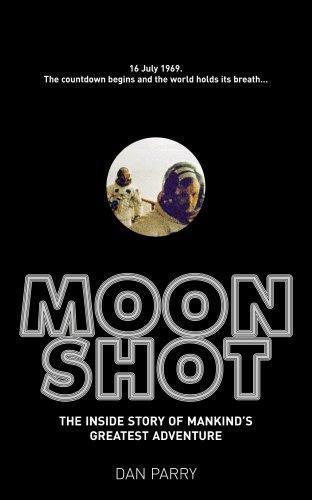
Moonshot: The Inside Story of Mankind's Greatest Adventure
by
Dan Parry
Published 22 Jun 2009
Supported by John Houbolt, a tenacious engineer with a passion for his work, the Langley plan also involved a rendezvous in space but suggested this take place not above the Earth but three days away, above the Moon – an idea that 'horrified' Low.15 Direct, to the point of being blunt, Houbolt refused to let the idea drop. He suggested that lunar orbit rendezvous (LOR) required only a very small capsule to be sent to the surface of the Moon. Unencumbered by the resources necessary for a six-day round trip to and from Earth, the capsule would only have to fly from lunar orbit down to the surface and back again. It would then rendezvous with a bigger vehicle for the journey home.
…
Aware of the difficulties of EOR – and of the president's deadline – in June von Braun came to accept that the only viable option was lunar rendezvous. It was the final move in the game: on 11 July 1962, NASA decided in favour of LOR. 'It is my opinion to this day,' Low wrote twenty years later, 'that had the Lunar Orbit Rendezvous mode not been chosen, Apollo would not have succeeded.'21 With Apollo free to move forward, Gilruth was now able to devote his attention to the fledgling Gemini programme, believing this would provide the experience in space-flight needed to fly to the Moon. Beyond spacesuits and extra-vehicular activities (EVAs), a pressing priority was to begin work on rendezvous techniques.
…
In the first of ten successful launches, the 162-foot-tall Saturn I flew for eight minutes, reaching more than 3,600mph.19 A month later, the contract to build the command and service modules was awarded to North American Aviation, who had built the X-15. North American's work was to be managed by the Manned Spacecraft Center, which would also oversee designs for the lunar module, submitted by the Grumman Corporation. Due to the protracted row over lunar orbit rendezvous, Grumman was not selected until November 1962.20 With the major Apollo development now work in progress, by 1963 the spiralling costs of the programme were causing concern for President Kennedy, whose personal interest in space was less than whole-hearted. Looking for ways of cutting the budget, in June he approached the Russian leader Nikita Khrushchev, according to his son Sergei, with a view to sharing a 'joint venture' in space exploration.
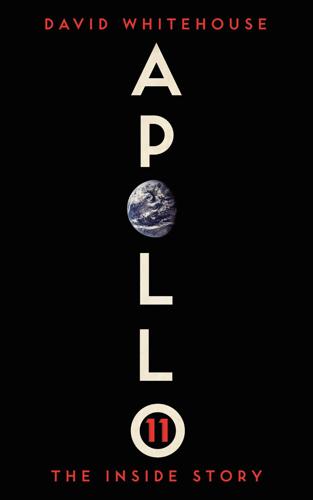
Apollo 11: The Inside Story
by
David Whitehouse
Published 7 Mar 2019
A large stand was built to static-test the full thrust of the Saturn’s five F-1 engines, which generated a staggering 180 million horsepower. But how do you get to the Moon? What combination of rockets, docking and landers do you need? Most came to feel that lunar-orbit rendezvous was the best way to carry out the mission. With lunar-orbit rendezvous the lander leaves the mother ship in lunar orbit and goes down to the surface. Upon returning to lunar orbit, it links up with the mother ship and the astronauts transfer to it and return to Earth. It was first proposed by John Houbolt, chairman of the group that studied this plan at the Langley Research Center.
…
Although this way much larger payloads could be flown to the Moon than by a single rocket, it was complicated and risky and would probably require years to get over the technical and operational problems, thus missing the end-of-the-decade deadline. By late 1961 the team at the new Manned Spacecraft Center were unified in support of lunar-orbit rendezvous and were investigating lunar lander design. In December of 1961 they appealed to Brainerd Holmes to approve lunar-orbit rendezvous but he was still not convinced, delaying the inevitable approval by many months. James Webb approved the lunarorbit plan and although a few of the President’s science advisors were unconvinced, the White House accepted Webb’s decision.
…
It was first proposed by John Houbolt, chairman of the group that studied this plan at the Langley Research Center. It required far less mass being sent to the Moon and needed one spacecraft designed specifically for lunar landing and take-off, while the other could be designed for flying to and from the Moon and specifically for re-entry and Earth landing. If the lunar-orbit rendezvous technique was used then only one Saturn 5 launch would be needed for each Moon mission. However, Brainerd Holmes who led Apollo in Washington was not a fan of this mission profile. He preferred Earth-orbit rendezvous, even though this would mean a dual launching of the Saturn 5 per mission, each launch carrying different spacecraft components prior to their joining together in orbit.

Shoot for the Moon: The Space Race and the Extraordinary Voyage of Apollo 11
by
James Donovan
Published 12 Mar 2019
It would probably take at least a year and twenty-two cargo rockets to get a one-man moon base up and running—and several more years before NASA figured out how to bring him back. There is no evidence that NASA ever actually considered this suggestion. But there was another option. John Houbolt wasn’t the first one to come up with the idea of lunar-orbit rendezvous (LOR). A self-educated Russian mechanic named Yuri Kondratyuk had suggested it in 1917 and so had an Englishman, Harry E. Ross, in 1948. Houbolt wasn’t even the first engineer at Langley, NASA’s revered research center, to suggest LOR; two others, Clint Brown and Bill Michael, had published a paper on the subject in May 1960 suggesting that a small “bug” with two astronauts leave a “mother ship” orbiting the moon, take them down to the lunar surface, and then return them.
…
One more task force was immediately formed to focus on EOR. Its chair refused to even let Houbolt discuss LOR. At another meeting that included three hundred potential Apollo contractors and several Space Task Group members, Houbolt tried again. Faget and several others told him to forget LOR. The lunar-orbit-rendezvous method finally gained some traction a month later, during another committee meeting, when direct ascent’s Nova began losing steam as a viable option. Houbolt gave an impressive presentation to the group, then a well-received one to the Space Task Group, and its members started to come around.
…
He concluded, “We believe this program offers the highest confidence factor of successful accomplishment within this decade.” Afterward, von Braun graciously sent Houbolt a personal copy of his remarks. On July 11, Jim Webb—who had originally been a supporter of direct ascent—made the announcement: NASA had selected the lunar-orbit-rendezvous method for the job of landing men on the moon. For Houbolt, it was vindication, finally, for what would come to be seen as eminent common sense. As his division chief said to him, “Congratulations, John. They’ve adopted your scheme. I can safely say I’m shaking hands with the man who single-handedly saved the government twenty billion.”
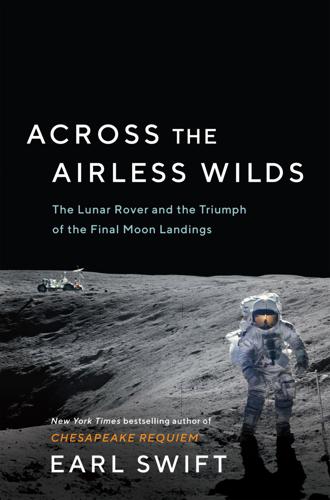
Across the Airless Wilds: The Lunar Rover and the Triumph of the Final Moon Landings
by
Earl Swift
Published 5 Jul 2021
Space and Rocket Center, 3–7, 100, 175, 302 V-2 rockets, 25–28, 29–30, 317n Vaccaro, Michael J., 99–00, 328n Van Hoeydonck, Paul, 248 Van Serg Crater, 288 Vaughan, William W., 72, 73–74 Vaughn, Otha “Skeet,” 299 Vehicle-soil mechanics, 42–43 Vespel, 107 Vietnam War, 170 VIPER (Volatiles Investigating Polar Exploration Rover), 302–4 Vomit Comet, 186, 222, 250, 339n Von Braun, Wernher, 21–28, 22 Apollo 15, 231, 232 Apollo 17, 293–94 at Army Ballistic Missile Agency, 68–71, 76–78 Collier’s series, 30–36, 96, 130, 184, 240, 268 death of, 295 departure from NASA, 184 Disneyland and, 36–37 early life of, 22–24 at Fort Bliss, 29 French Lick speech, 72, 73 leadership style of, 71–74, 95–96 lunar orbit rendezvous, 89–91 at Marshall Space Flight Center, 70–75, 78–80, 95–96, 102–3 departure, 182–84 lunar orbit rendezvous, 89–90, 91 lunar rover vehicles, 104–6, 136–42, 146, 148, 149, 164, 178 Saturn program, 74, 78–80, 83, 91, 144, 182, 295, 323–24n Nazi Party and, 23–28, 316–18n Project Bumper, 29–30 at Redstone Arsenal, 30, 37, 51, 53, 68–70, 79, 102 transfer to NASA headquarters, 183, 184 vision of space exploration, 31–37, 102–4, 130, 277, 293–94 Vostok 1, 71 Wagner, Richard, 276 Walt Disney’s Disneyland (TV show), 36–37 Warsaw University of Technology, 39, 295 Washington Post, 215 Waterways Experiment Station, 202–3 Wayne State University, 50 Weight, 40, 85, 97, 139, 140, 147–48, 347n Boeing/GM rover, 159, 176–78, 184–85, 191, 201, 223–24 Weird Crater, 10–11 Westinghouse, 143 Wheels (wheel design), 105–8, 109 Bekker and, 39, 51–52, 65–67, 82–83, 85, 92, 112–13, 169, 202–3 Bendix rover, 160 Boeing/GM rover, 154–55, 166, 167, 169, 179–80, 202–3, 211, 216–17, 236 Chrysler rover, 163 GM MTA, 101–2 Grumman rover, 164 Markow metalastic and conoidal wheels, 109–12 Molab, 96–97, 99 Whipple, Fred, 31, 33, 34, 35 White, Ed, 132 White Sands Proving Ground, 29–30 Wilhelm, Don, 122–23 Williams, F.
…
All of that translated into a pile of mass to get off the pad and into space, meaning a bigger launch vehicle. Since 1960, NASA had studied a superbooster for the job, a monster rocket called the Nova that would dwarf the Saturn V in size and power. The third option seemed a long shot in the early days of the space program. In lunar orbit rendezvous, a single rocket would propel a coupled mother ship and a tiny lander to lunar orbit, where they’d separate; while the mother ship loitered there, the lander would descend to the moon’s surface. At the end of its visit, the lander would launch back into orbit and reconnect with the mother ship.
…
Both of those options required setting down a very large spacecraft on the lunar surface—and seeing as how work was already under way on the Apollo command module, the feat would have to be accomplished while the astronauts lay on their backs, facing the heavens rather than the ground. Meanwhile, lunar orbit rendezvous was the most efficient option, but it called on the crews of two spacecraft to find each other and safely dock. Nothing like that had been attempted in Earth orbit, let alone so far from home. But at an all-day meeting of NASA leadership at the Marshall Center, von Braun shifted his allegiance to Houbolt’s model, clearing the way for work to start in earnest on the systems that would get America to the moon.
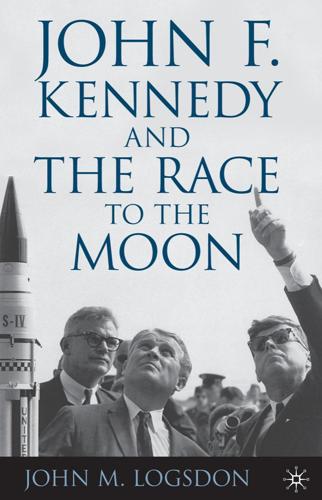
John F. Kennedy and the Race to the Moon (Palgrave Studies in the History of Science and Technology)
by
John M. Logsdon
Published 15 Dec 2010
Interview of Jerome Wiesner by W. Henry Lambright, November 15, 1990, NHRC, Folder 7106. Oral history interview of Wernher von Braun, March 31, 1964, JFKL. 266 NOTES 2. For accounts of NASA’s selection of lunar orbit rendezvous, see Murray and Cox, Apollo: Race to the Moon, chapters 8 and 9; Neufeld, Von Braun, 372–378; and James R. Hansen, Enchanted Rendezvous: John C. Houbolt and the Genesis of the Lunar-Orbit Rendezvous Concept, NASA, Monographs in Aerospace History, No. 4, 1995. Houbolt’s letter is reprinted in Logsdon with Launius, Exploring the Unknown, Vol. VII, 522–530. 3. Murray and Cox, Apollo: Race to the Moon, 141. 4.
…
A White House-NASA Argument: How Best to Go to the Moon The first stop on President Kennedy’s two-day tour to inspect the facilities being developed for Apollo was the Marshall Space Flight Center in Huntsville, Alabama. There he was briefed by Wernher von Braun on the approach that NASA had finally chosen for carrying out the lunar landing mission, called lunar orbit rendezvous (LOR). This approach had emerged in the first half of 1962 as NASA’s preferred approach to getting to the Moon, but the White House Office of Science and Technology and its external advisers on the President’s Science Advisory Committee (PSAC) were at the time of JFK’s trip embroiled in a dispute with NASA over the wisdom of that choice.
…
Identifiable in the image, in addition to President Kennedy are (left to right) center director Wernher von Braun, NASA administrator James Webb, Vice President Lyndon Johnson, Secretary of Defense Robert McNamara, presidential science adviser Jerome Wiesner, and director of defense research and engineering Harold Brown. NASA associate administrator Robert Seamans, Jr. is partially visible behind von Braun. Most of those in this photograph participated in a brief but spirited debate about the wisdom of the lunar-orbit rendezvous approach to the lunar landing mission (NASA photograph). heavy fuel and even heavier heat shield required for the return to Earth, it could be much lighter than a spacecraft that would both land on the Moon and also have to carry the crew back to Earth. This weight reduction resulting from this separation of functions made it possible to launch the whole lunar landing mission with one Saturn V booster, rather than the two that would be required by the Earth orbit rendezvous (EOR) approach.
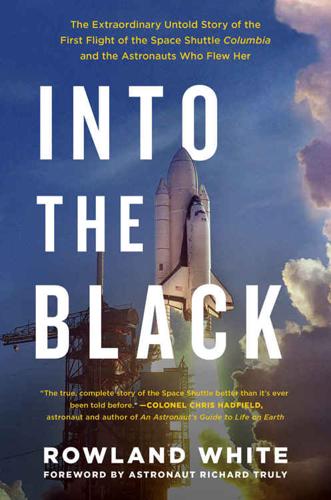
Into the Black: The Extraordinary Untold Story of the First Flight of the Space Shuttle Columbia and the Astronauts Who Flew Her
by
Rowland White
and
Richard Truly
Published 18 Apr 2016
The mission required Haise to maneuver the Space Shuttle to within a few hundred feet of Skylab before the radio-controlled booster, ejected from the payload bay by springs, was then remotely piloted by Lousma to dock with the slowly turning space station, its docking port describing circles in the sky. Tricky, for sure, but it was doable, reckoned Lousma. Furthermore, neither he nor Haise could resist the flight’s inherent appeal. Classic space rendezvous, enthused Freddo, who likened it to the lunar orbit rendezvous he’d trained for on Apollo 13. Haise said no to the chance of a flight on Apollo-Soyuz because, for all its historical significance, it was not, as far as he was concerned, a real challenging or exciting, testing mission. Not like this one. It was his pilot, though, who best summed it up.
…
The way to do it was not to use the heavy, complicated command module as a lunar lander, but instead to take a hollowed-out, lightweight vehicle dedicated to taking the astronauts to the surface and back to dock with the command module waiting in lunar orbit. His rough calculations suggested that, if adopted, it might be possible nearly to halve the weight of the Saturn V rocket’s upper stages. It was a technique called lunar orbit rendezvous (LOR), and it scared the life out of everyone working in Houston. If, for any reason, the rendezvous around the moon failed, the moon walkers would simply be left circling like a broken satellite, unable to come home, talking to Houston only until their fuel cells expired. Such was Houbolt’s conviction, though, that, abandoning any pretense of protocol, he bypassed the normal chains of command and wrote directly to NASA’s deputy administrator.
…
GLOSSARY AFB Air Force base AFS Air Force station ALT Approach and Landing tests Angle of attack angle between the oncoming air and a reference line on the aircraft, often a line connecting the leading edge with the trailing edge of the wing AOA abort once around APU auxiliary power unit ARPS Aerospace Research Pilot School ATO abort to orbit BFS backup flight system Blue Cube Air Force Satellite Control Facility CAP crew activity plan CapCom capsule communicator CCD charge-coupled device CIA Central Intelligence Agency CMP command module pilot CORONA code name for the KH-1, KH-2, KH-3 and KH-4 reconnaissance satellites CRT cathode ray tube CSM command and service module DFI development flight instrumentation DMI deployment mapping instrument DOD Department of Defense DORIAN code name for the KH-10 camera system designed for the Manned Orbiting Laboratory EST Eastern Standard Time (US) ET external tank EVA extravehicular activity FBI Federal Bureau of Investigation FRSI felt reusable surface insulation FSL Flight Simulation Laboratory g unit of acceleration GAMBIT code name for the KH-7 and KH-8 reconnaissance satellites GAO General Accounting Office GMT Greenwich Mean Time GPC general-purpose computer GVA grizzled veteran astronaut HAC heading alignment circle HEXAGON code name for the KH-9 reconnaissance satellite hydraulic oleo a shock absorber used on landing gear hydrazine rocket fuel hypergolic rocket one where the propellants spontaneously ignite upon coming into contact ICBM intercontinental ballistic missile IP initial point IR infrared IRIS infrared imagery of Shuttle JSC Johnson Space Center KAO Kuiper Airborne Observatory KENNEN code name for the KH-11 reconnaissance satellite KEYHOLE code name for US spy satellites KSC Kennedy Space Center LACROSSE code name for a family of NRO radar reconnaissance satellites; properly known, according to some sources, as LACROS LLTV lunar landing training vehicle LM lunar module LMP lunar module pilot LOR lunar orbit rendezvous LOS loss of signal LST large space telescope Mach measurement of speed in relation to the speed of sound Max Q maximum dynamic pressure ME main engine(s) MECO main engine cut-off MET mission elapsed time MIT Massachusetts Institute of Technology MMU manned maneuvering unit MOL Manned Orbiting Laboratory MSC Manned Spacecraft Center MSE manned spaceflight engineer MSFC Marshall Space Flight Center NACA National Advisory Committee for Aeronautics NAS naval air station NASA National Aeronautics and Space Administration NORAD North American Aerospace Defense Command NRO National Reconnaissance Office OMB Office of Management and Budget OMS orbital maneuvering system OPF Orbiter Processing Facility OPS operational sequences OTF orbital test flight PAD preadvisory data PASS primary avionics software system PIO pilot-induced oscillation PJ pararescue jumper PRO proceed RAE Royal Aircraft Establishment RAF Royal Air Force RAT ram air turbine RCS reaction control system RFP request for proposal RID review item discrepancy RMU remote maneuvering unit ROTC Reserve Officers Training Corps RTLS return to launch site RTV room temperature vulcanization SAIL Shuttle Avionics Integrated Laboratory SALT Strategic Arms Limitation Talks SCA Shuttle Carrier Aircraft SCAPE self-contained atmospheric protection ensemble SDS Satellite Data System, a network of communication satellites used to relay information from KH-11 and LACROSSE back to US ground stations sep short for separation SimSup simulator supervisor SIP strain isolation pad SMS Shuttle Mission Simulator SRB solid rocket booster SSME Space Shuttle main engines STA Shuttle Training Aircraft STS space transportation system TACAN tactical air navigation TAL transatlantic abort landing TFNG The F***ing New Guys TIG time of ignition TPS thermal protection system USAF United States Air Force VAB Vehicle Assembly Building VOS USAF Satellite Control Facility Shuttle operations office APPENDIX STS-1 GRAPHICS AND LOCATION MAPS KEY Structure and general 1 Two-spar fin torsion box, integrally stiffened skin panels 2 Fin base rib, integrally machined 3 Multibolt fin/fuselage attachment fittings 4 Engine support/thrust structure 5 Main engine thrust and fin support canted frame, integrally machined 6 Shoulder longeron 7 Wing spar carry-through structure 8 Upper fuselage attachment fitting, also used for hoist attachment 9 Upper thrust beams, titanium machined with boron epoxy-reinforced welded-on end fittings 10 Lower thrust beams 11 Machined and diffusion-bonded titanium bracing structure 12 Keel beams 13 Aluminum honeycomb heat shield, thermally insulated 14 Midfuselage payload bay shoulder longeron 15 Electrical cable tray 16 Machined, integrally stiffened frames 17 Between-frame machined skin stiffeners 18 Integrally stiffened aluminum skin panels 19 Truss bracing 20 Payload bay wing carry-through structure 21 Payload bay lining insulation panels 22 Payload bay door, conventional skin and stringer construction (two doors, four panels) 23 Radiator panels (two per side) 24 Forward fuselage crew module 25 Integrally stiffened machined frames and skin for inner cone (crew module is self-contained unit, housed in aerodynamic shell) 26 Cabin support links, total 12 27 Rear pressure bulkhead 28 Forward pressure bulkhead 29 Crew entry door 30 Machined window frames and thermal-resistant transparencies 31 Forward unpressurized nose section 32 Reinforced carbon-carbon nose-cap 33 Wing/fuselage multibolt attachment fittings 34 Corrugated-web wing spars 35 Built-up, multibraced and capped wing ribs 36 Riveted stringer, upper and lower wing-skin panels 37 Wing/fuselage stub structure (electrical and hydraulic connection panels) 38 Detachable leading-edge structure, reinforced carbon-carbon skin panels 39 Leading-edge access panels (upper and lower) 40 Heat-resisting surface insulation along entire leading edge spar, with built-in thermal barrier 41 Sliding elevon shrouds, also give access to elevon controls and jacks 42 Entire structure covered in HRSI and LRSI tiles Environmental control and life support C1 Access door to payload bay or Spacelab when carried C2 Emergency exit, first two orbiters only C3 Upper observation windows C4 Rearward-facing observation windows C5 Commander’s station C6 Pilot’s station C7 Flight control panels (automatic control and manual override) C8 Hand controller, both sides C9 Rudder pedals, both sides C10 Speed brake thrust controller (both sides) C11 Avionic consoles C12 Toilet and hygiene C13 Galley C14 Access via floor hatch to lower deck, both sides C15 Airlock C16 Ladder to lower deck C17 Four-berth sleeping bunks C18 Cabin heat exchanger and water separator C19 Fan C20 Wastewater tanks C21 Drinking and domestic water tanks C22 Avionics bay heat exchanger and fan C23 Avionics and instrument cooling ducts C24 Return-air ducts to cabin fans C25 Capsule and payload bay venting ducts (nitrogen purged, vented rearward Fuel system F1 Hydrogen tank (oxygen tank forward) F2 Integrally stiffened aluminum skin structure supported on frames F3 Machined end dome F4 Rear external tank/orbiter attachment cradle F5 Hydrogen-feed pressurization line F6 Oxygen-feed pressurization line F7 Manhole cover F8 Antivortex baffle F9 Hydrogen tank pressure line F10 Oxygen tank pressure line F11 Oxygen recirculating line F12 Electrical conduit F13 External pipe support, sliding ball Teflon-coated on surface to accommodate shrinkage F14 Orbiter oxygen pull-off umbilical connection (hydrogen on other side) F15 Hydrogen main fuel-feed pipe F16 Oxygen umbilical panel (hydrogen on other side) F17 Oxygen tank fill and drain pipe (hydrogen on other side) F18 APU fuel tanks (three) F19 Helium tanks (four) used for pneumatic systems, valve actuation and tank purging F20 Solid-fuel rocket booster, one each side F21 Ribbon-type drogue chute (four) F22 Recovery parachute (three) F23 Navigation stowage and thrust-vector system access F24 Cable tunnel F25 Forward separation motors, 15,000-pound thrust each F26 Rear separation motors, 15,000-pound thrust each F27 Rear skirt and launch support cone F28 Contoured expansion nozzle, 8 omni-axial gimbal capability Payload-handling equipment E1 Payload-handling station E2 Rendezvous and docking station E3 Payload specialist’s station E4 Payload manipulating arm E5 Mating adapter E6 Manipulator armrest E7 Payload retention guide, electrically actuated E8 Payload mounting trunnion Propulsion, main engines and orbital maneuver system P1 Rocketdyne liquid-propellant, throttleable main engine, one of three P2 Gimbal actuator (two per engine) 10.5 pitch, 8.5 yaw P3 Low-pressure turbopump (liquid hydrogen) mounting P4 High-pressure hydrogen turbopump P5 High-pressure oxygen turbopump P6 Engine controller P7 Thrust nozzle P8 Nozzle cooling pipes P9 Heat shield P10 Orbital maneuvering system engine packs (both sides interconnected) P11 OMS main engine (6,000-pound thrust in vacuum) one of two, electromechanical gimbal-actuated P12 OMS propellant tanks containing nitrogen tetroxide and monomethyl hydrazine P13 Helium bottle to pressurize OMS propellants P14 Orbiter reaction-control system (RCS) P15 Primary bipropellant thrusters (870 pounds in vacuum), 12 per side P16 Vernier thrusters (25 pounds in vacuum), one each side P17 RCS propellant tanks containing nitrogen tetroxide and monomethyl hydrazine P18 Forward RCS propulsion units (three) P19 Fixed thrusters (total 14) P20 Vernier thrusters (total 2) P21 RCS forward propellant tanks P22 Ground servicing receptacle Avionics, electrical and radio A1 Rear avionics bay, one of three A2 Electrically deployed payload bay doors and radiators A3 Orbiter electrical fuel cell (total three) A4 Crew module electrical connecting panels to payload bay A5 Static and temperature probes (normally retracted except for approach and landing) A6 S-band antenna A7 L-band antenna A8 Ku-band antenna A9 Floodlight (three per side) A10 Hydrogen/oxygen fuel cells A11 Transparency cover for star tracker Hydraulics H1 One of three hydraulic reservoirs serving three independent systems H2 Pump (one of three) 3,000 pounds /square inch variable delivery H3 Sundstrand APU (one of three) H4 APU exhaust ducts H5 Water boilers and coolers (one of three) H6 Boiler blow-off outlets H7 Rudder/speed-brake actuator unit H8 Rotary actuator (one of four) H9 Body-flap actuators (total three), –11.7 +22.5 H10 Eleven actuators (two per side, total four), –40 +15 H11 Main engine gimbal actuating jacks (two per engine) and control valves (three) H12 Hydraulically actuated antiskid device, main undercarriage, and up-lock (all three legs of freefall design) H13 Nose undercarriage, hydraulically steered PICTURE ACKNOWLEDGMENTS Although every effort has been made to trace copyright holders and clear permission for the photographs in this book, the provenance of a number of them is uncertain.
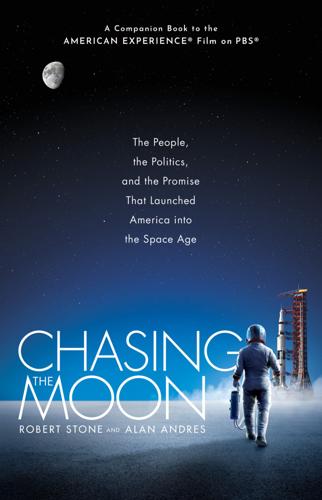
Chasing the Moon: The People, the Politics, and the Promise That Launched America Into the Space Age
by
Robert Stone
and
Alan Andres
Published 3 Jun 2019
NASA’s brain trust next gravitated toward accepting an earth-orbital-rendezvous plan in which a moon vehicle would be assembled in earth orbit from components launched on multiple rockets. Gradually a third option, which had been dismissed in earlier discussions, was given another look. It was a risky scenario but offered strategic advantages. Known as “lunar-orbit rendezvous,” it was championed by John Houbolt, a young aerospace engineer from NASA’s Langley Research Center. It proposed launching together on a single rocket two individual small spacecraft—the Apollo and a lunar-landing bug. They would then separate during lunar orbit. The bug would descend to the Moon, land, and then return to lunar orbit.
…
It was an unorthodox proposal as it required multiple rendezvous and dockings far from the Earth, something no one was certain could be routinely accomplished in the weightlessness of space. It also entailed designing separate guidance, environmental, and propulsion systems for both spacecraft, a redundancy many believed would add unnecessary complications. Von Braun had been a vocal opponent of the lunar-orbit-rendezvous idea when it was first proposed, as it would reduce the role of his group at the Marshall Center. However, he surprised his colleagues at a meeting in mid-1962 when he unexpectedly endorsed the plan. He believed it would balance managerial coordination between Robert Gilruth’s group, his group in Huntsville, and those at the Cape, along with the primary contractors, which would eventually include Boeing, North American Aviation, Grumman, and Douglas Aircraft.
…
If the Russians were already flying men into space, he said, the United States couldn’t be seen wasting time with monkeys. “Our people [have] to learn to live with risk and make damned sure that every effort [is] made to avoid casualties.” Wiesner and Webb passionately disagreed once again, a year later, about the risk involved with the lunar-orbit-rendezvous option. Calling it “the worst mistake in the world,” Wiesner believed the plan was a blueprint for disaster. During Kennedy’s two-day tour of NASA facilities in 1962, Wiesner and Webb argued about it in front of the press while touring the Marshall Space Flight Center. Eventually Kennedy had to intervene, humorously attempting to defuse the conflict by explaining, “Webb’s got all the money and Jerry’s only got me.”
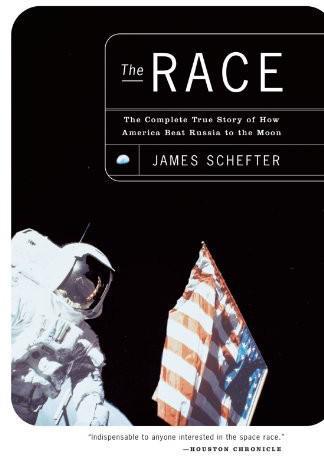
The Race: The Complete True Story of How America Beat Russia to the Moon
by
James Schefter
Published 2 Jan 2000
But von Braun was a rocket scientist first, a bureaucrat second. “It is the position of Marshall Space Flight Center,” von Braun began, and everyone in the room leaned forward, “that we support the lunar orbit rendezvous plan …” There was stunned silence as he paused. Had they heard right? Without so much as a minute’s consultation with his staff, was Wernher von Braun switching sides? He was. United States astronauts were going to the moon, and they’d do it by following John Houbolt’s crazy scheme. Lunar orbit rendezvous was now official NASA policy. All but a handful of the Space Task Group’s eleven hundred people made the move from Langley Research Center, Virginia, to Houston in 1962.
…
John Houbolt had the innocuous title of associate chief of the Dynamics Loads Division at Langley Research Center. He was far down the chain of command and without much influence. That didn’t stop him. He’d been studying rendezvous in space, and with some of the people working for him, John Houbolt came up with something new. He called it lunar orbit rendezvous (LOR), and everyone who heard about it thought he was nuts. In the LOR scheme, it only took one large rocket from Wernher von Braun’s inventory. The Saturn 5, agreed to by von Braun and Gilruth in late 1961 and approved by NASA headquarters, could do the job. The Saturn 5 clustered five of von Braun’s F-1 rocket engines in its first stage to generate 7.5 million pounds of thrust.
…
It was the rendezvous in lunar orbit that scared people. The United States still hadn’t put John Glenn into Earth orbit. Rendezvous involved tricky maneuvers that were still theory, had never been tried and wouldn’t be for years. Now this guy Houbolt was trying to convince the bosses that lunar orbit rendezvous was the way to go, but almost everyone believed the plan was a recipe for dead astronauts. Houbolt refused to forget it. He stepped out of channels in May 1961 to send a letter to Dr. Robert Seamans, NASA’s associate administrator and number three man, urging him to look carefully at all rendezvous schemes.
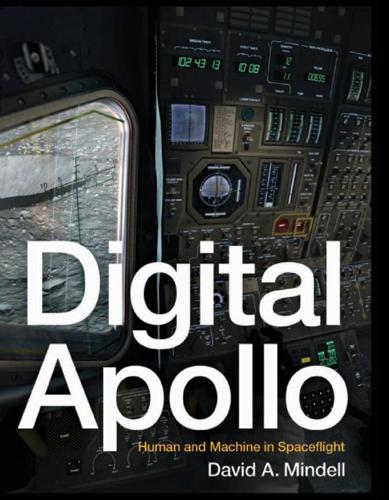
Digital Apollo: Human and Machine in Spaceflight
by
David A. Mindell
Published 3 Apr 2008
The initial MIT study even included a large periscope so the astronaut could see the surface as he landed from an awkward position at the top of a twenty-five-meter-tall vehicle.58 But as spaceflight matured and engineers became more familiar with the possibilities, other options emerged. A mathematician at NASA named John Houbolt began looking at an idea called ‘‘lunar orbit rendezvous,’’ or LOR. In this mode, NASA would send two spacecraft to the moon, and one would stay in orbit while the other descended to the surface. This scheme introduced a new kind of vehicle into the equation, and brought several advantages: the actual lunar landing craft could be a small, specialized machine, and all of the equipment and fuel required to return to earth could stay in orbit and need not be landed on the moon.
…
.: MIT Instrumentation Laboratory, 1971. Hanley, David L., Jayne Partridge, and Eldon C. Hall. ‘‘The Application of Failure Analysis in Procuring and Screening of Integrated Circuits.’’ Cambridge, Mass.: MIT Instrumentation Laboratory, 1965. Hansen, James R. Enchanted Rendezvous: John C. Houbolt and the Genesis of the Lunar-Orbit Rendezvous Concept. Washington, D.C.: NASA, 1995. Hansen, James R. Engineer in Charge: A History of the Langley Aeronautical Laboratory, 1917–1958. NASA History Series. Washington, D.C.: NASA Scientific and Technical Information Office, 1987. Hansen, James R. First Man: The Life of Neil A. Armstrong.
…
See also Software display and keyboard (DSKY) unit and, 165– 169 verb-noun syntax and, 167 Kollsman, Paul, 26, 110, 127 Kollsman Instrument, 110 Korean War, 49 Kosmala, Alex, 127, 147, 161, 172 Kraft, Chris, 136, 169 Apollo 12 and, 241–242 astronaut deaths and, 173 International Space Station, 265 landings and, 192 Interrupt-response routines, 149–150 Lunar Landing Training Vehicle (LLTV) and, Invertible numbers, 101 214–215 Irwin, Jim, 249, 253–254, 259 lunar module (LM) and, 184–185 Jamming, 97, 104, 138 pilot role and, 75–76, 81, 86 Society of Experimental Test Pilots (SETP) Jet Propulsion Laboratory (JPL), 100, 102, 271 and, 80 teleprinter and, 108–109 Jets, 20, 32–33, 45 Kranz, Gene, 221–224, 230, 249 Jet selection logic, 140 Kubrick, Stanley, 12 J-missions, 249–250, 254 Kuettner, Joachim, 65 Johnson, Caldwell, 136 Johnson, Clarence ‘‘Kelly,’’ 23, 45–46, 61 Johnson, Lyndon, 13, 95–96 Johnsville tests, 70–73 Landing point designator (LPD), 204–206, 223–225 Apollo 11 and, 259 Index Apollo 12 and, 237–238 Apollo 15 and, 253–254 347 variations and, 251 velocity-nulling guidance and, 215 Apollo 16 and, 255 Landmark line, 114 Apollo 17 and, 258 Langley Memorial Aeronautical Laboratory, 27, pilots’ reasons for not using, 259–261 Landings, 295n53 accuracy and, 235–243, 251–255 44 Pilotless Aircraft Research Division and, 46 Space Task Group (STG) and, 74–77 antennas and, 190–191 Laning, Hal, 99–102, 104, 149, 151 Apollo 14 and, 243–249 autopilot and, 193–194 ‘‘Let Man Take Over’’ (New York Times editorial), 80–82 braking phase and, 197–202 Lickly, Dan, 112, 146–147 commit point of, 193 Life magazine, 67, 73–74, 82 communications and, 190–191 Lindbergh, Charles, 5, 7, 17, 190 confidence and, 214–215 Link Company, 209 DELTAH and, 201 Little old ladies (LOLs), 155 difficulty of, 181–182, 214–215 LM guidance computer (LGC), 191, 197, 232 Eagle and, 217–226 equations for, 189–190 fuel issues and, 190, 199–200, 202–203, 207 hard over mode and, 195–196 high gate and, 202–204 Apollo 14 and, 243–249 Eagle landing and, 221–232 Lockheed, 29–30 Johnson and, 45–63 Skunk Works and, 46 human factors and, 191–193, 202–208 Lovell, Jim, 84, 169, 178–179, 243 instrumental flight rules (IFR), 240, 242, 254 Low, George, 134, 172, 176–178 J-missions and, 249–250, 254 Low gate, 206–207, 224 low gate and, 206–207, 224 mission planning and, 186–190 Lucas, George, 15 LUMINARY, 151–152 phases of, 186 LUNAR, 148 pitch over and, 251–255, 258 Lunar Excursion Module (LEM), 111–113 powered descent initiation (PDI) and, 199– Lunar Landing Branch, 187–190 200 pucker factor and, 211 Lunar Landing Research Vehicle (LLRV), 211– 213, 266 radar and, 190–191, 200–201, 227–232, 248– Lunar Landing Training Vehicle (LLTV), 213– 249 real-time integration and, 191 215, 241, 254, 255, 258 Lunar Mission Simulator (LMS), 209–210, 253 scientists and, 256–257 Lunar module (LM) simulators and, 210–213 AGC interface and, 168 software and, 191, 193, 195–196 Apollo 7 and, 175, 177 spacecraft control and, 182–186 Apollo 11 and, 217–218 subsytems of, 190–193 Apollo 12 and, 235–243 systems engineering and, 190–193 Apollo 14 and, 243–249 touchdown and, 206–208 training for, 208–210 Apollo 15 and, 251–255 Apollo 16 and, 255 user interface and, 194–197 astronaut safety and, 184–186 348 Lunar module (cont.) center of gravity of, 190 control of, 1–6, 182–186 Cooper rating scales and, 186 DELTAH and, 201 Index McDivitt, Jim, 86, 169, 185–186, 214 McDonnell Douglas, 63, 92–93, 96, 77, 161 Mach numbers, 44 space shuttle and, 49 X-15 and, 45–63 descent orbit insertion (DOI) and, 217–218 McKay, John, 90–91 descent propulsion system (DPS) and, 190 MacKenzie, Donald, 96–97 descent stage and, 186 Magnetic tape storage, 87 digital autopilot and, 139–142, 193–197 docking and, 186, 192–196 Mailer, Norman, 95, 217, 222, 225 Mallory, George, 39 Eagle and, 1–4, 217–232 Manned Space Flight Meeting, 263 eight ball and, 194–195 Map and data viewer, 108–109 electrical noise and, 2–3 Mars, 15, 39 fuel issues and, 199–203, 207 Exploration Rover Project, 271 Grumman and, 183–184, 187–188, 192, 213, Instrumentation Laboratory and, 99–101 233 guidance systems operation plan (GSOP) for, 151–152 handling qualities and, 186–187 hard over mode and, 195–196 probes and, 7, 99–102, 154 Martin, Fred Apollo 11 and, 222, 227 project managers and, 169 software and, 146–148, 151, 169, 173 human factors and, 193–197 Mascons, 220–221 Klumpp and, 188–190 Masculinity, 13–14, 22–23, 146 landings and, 181–215 Maskelyne W Crater, 220 lifeboat mode of, 186 Massachusetts Institute of Technology (MIT), low orbit and, 197, 199 LUMINARY and, 151–152 24, 27–28, 35, 75 Aldrin and, 86 as multistage rocket, 183 Instrumentation Laboratory, 7, 25, 37, 96 (see orbital parameters and, 186 also Instrumentation Laboratory) orientation of, 200 project MAC and, 148 pitch over and, 238, 251–255 project managers and, 169–173 radar and, 190–191, 200–201 Whirlwind computer and, 99, 124 simulators and, 186, 208–213 Matador missile, 18 Space Task Group and, 186–187 user interface and, 194–197 Mathematics Battin and, 100–103, 194 velocity-nulling guidance and, 215 guidance systems and, 147 weight issues and, 183–184 Houbolt and, 111 Lunar module pilot (LMP), 256, 266 invertible numbers and, 101 landings and, 191–197, 208 Kepler’s laws, 118 software and, 243 landings and, 189–190 Lunar orbit rendezvous (LOR), 111–113, 135, Laning and, 99–102 146 Lunar roving vehicle, 250 slide rules, 10, 24, 87, 165, 181 software and, 146–149 Index Matranga, Gene, 210 Matthews, Charles, 75 349 Minuteman ICBM missiles, 125, 127, 133–134 Missiles, 19, 61, 263 Maynard, Owen, 193 Dyna-Soar and, 70 McNamara, Robert, 5, 95–96 human factors and, 61–62 Mean time between failure (MTBF), 130, 133 inertial guidance systems and, 160 Medal of Freedom, 232 intercontinental ballistic, 37–40, 70, 97, 125, Megamachine, 12 Mercury program, 6–7, 48, 62–64, 134–135, 127, 133–134 jamming and, 97 139, 161 airmen school and, 65–67, 84, 90 Johnsville tests and, 72 Matador, 18 automation and, 77–79 Minuteman, 125, 127, 133, 134 control and, 74, 77–81 Navaho, 18, 33–34 Faget and, 75 Polaris submarine and, 97–99 fly-by-wire and, 79, 81 Redstone, 65, 74, 77 fuel inefficiency and, 79 reliability and, 130–131 Glenn and, 81–82 Snark, 18 ground control and, 83 guidance systems and, 96, 100, 103, 112, 121 Space Task Group (STG) and, 74–77 Thor, 18, 97, 110 Langley engineers and, 74–77 Titan, 18, 70, 87, 110, 120 Life magazine and, 73–74, 82 Mission Control Center, 2, 175 misinformation and, 79–81 Mission Development group, 127 pilot’s role in, 73–83, 93–94 Mission Planning and Analysis Division project management and, 170 (MPAD), 170, 187–190, 226, 241 psychologists and, 76–77 Mitchell, Ed, 168,, 243–249 rate control and, 79, 81 redundancy and, 123 Mod 3C, 124–125 Moon, 62–63, 91–92 reentry and, 83 box canyons of, 251 rudder pedals and, 79 Eagle landing and, 217–232 sequencing devices and, 83 grid coordinates for, 236 Shea and, 135–136 Hadley Rille and, 251 simulators and, 208 J-missions and, 249–250 Space Task Group (STG) and, 74–77 lack of atmosphere and, 197 three-axis stick and, 79 von Braun and, 79–80 low orbit over, 197, 199 mascons and, 220–221 Wolfe and, 28–29, 74 Mount Hadley and, 253 Yeager and, 74 Palmetto Crater and, 255 Mercury Seven, 74, 84, 121 Sea of Tranquility and, 251 MH-96, 58–61, 77 South Ray Crater and, 255 MicroLogic ICs, 125–126 Stone Mountain and, 255 Miller, Jim, 148, 160–161, 175–176 Miller, John, 106 Millikan, Clark, 43 von Braun and, 67–69 Moore, Mary Tyler, 62 Mount Hadley, 251, 253 350 Index MTV, 8 Mueller, George, 37, 133–136 scientist-astronauts and, 256–257 space shuttle and, 264–265 Mueller, Robert, 169 Space Task Group (STG) and, 75 Mumford, Lewis, 12 symbolism and, 13 Murray, Arthur, 72 terminology and, 13–14 Webb and, 96–97 National Advisory Committee on Aeronautics (NACA), 6, 76 airmen school and, 26–31 Edwards Air Force Base and, 17, 43–44 High Speed Flight Station (HSFS) and, 43– 44 instrumentation and, 96 X-15 results and, 62–63 Navaho missile, 18, 33–34 Naval Aviation Medical Laboratory, 70 Navigation, 77 automatic pilot and, 139–142 (see also Automation) Battin and, 100–103 simulation development and, 51–54 computers and, 127 (see also Computers) Space Task Group (STG) and, 75 decision points and, 103 systems engineering and, 36 display and keyboard (DSKY) unit and, 165– X-15 and, 45–63 National Aeronautics and Space Administration (NASA), 26, 28, 66, 138 Apollo program and, 91–93 (see also Apollo program) 169 early Apollo missions and, 174–180 G&N System Panel and, 148–149, 160, 168– 169 ‘‘go to moon’’ interface and, 160–161 astronaut deaths and, 173 ground control and, 108–109, 138 Bennett and, 188 guidance systems and, 103–109 (see also computer development and, 123–143 congressional support of, 96 creation of, 6, 49 Guidance systems) jamming and, 104 Kalman filter and, 103 creative times at, 112 landings and, 181–215 (see also Landings) Dryden Research Center and, 44, 266 lunar module (LM) and, 191–193 Exceptional Service Medal and, 240 map and data viewer for, 108–109 future of, 15–16, 263–271 occultations and, 102, 105 G&N System Panel and, 148–149 orbital transfers and, 101–102 Gemini and, 84 (see also Gemini program) P40 program and, 150 gimbal reliability and, 119–121 Jet Propulsion Laboratory (JPL) and, 102 primary navigation and guidance system (PNGS) and, 191, 196–197, 200–201, 207, J-missions and, 249–250, 254 218, 220, 230–231, 259 Mars probe and, 7, 99–102, 154 software and, 145–147, 151–154 Mercury program and, 73–83 (see also space sextant and, 104, 109–110, 114–119 Mercury program) statistical methods for, 103 MIT contract and, 103–109 Nevins, Jim, 161–165, 177, 186, 196 optics issues and, 114–119 New Soviet Man, 89 project management and, 169–174 psychologists and, 76, 81 New York Times, 80–82, 84 Nixon, Richard, 49, 232, 251 race to moon and, 1–5, 9–10, 13, 15 NOR gates, 99, 126 Index North American Aviation, 30, 33, 35, 96 command module contract and, 112 digital autopilot and, 141 351 Pilotless Aircraft Research Division (PARD), 46, 75 Pilots, 8 humidity effects and, 137–138 age of systems and, 36–41 nature of, 113–114 airmen vs. chauffeur school and, 21–23, 46– optics issues and, 116–117 Shea and, 135–136 49, 63, 160–161 anxiety and, 54 Northrop Aircraft, 29 Apollo program and, 20 (see also Apollo Noun 69, 236–237, 242–243 Noyce, Robert, 99, 127 program) automation and, 17–21, 26, 43, 66–69, 73– Occultation, 102, 105 barnstormers and, 10, 20 Of a Fire on the Moon (Mailer), 95, 217 black boxes and, 34–36, 39 Operating systems, 149–150 booster control and, 80, 93–94 Operator error, 159–160 centrifuge tests and, 70–72 Opportunity rover, 15 command module and, 108–109 Optics Apollo and, 114–119 computer interactions and, 1–7, 19–21, 107, 161–166 83, 139–142, 259–260 lower equipment bay and, 116 control and, 19–21 (see also Control) mounting of, 115–116 Cooper-Harper rating scale and, 31–32, 186 North American and, 116–117 as cowboys, 28, 74 space sextant and, 114–115 credit/blame for, 81 Orbiter spacecraft, 210 as cyborgs, 36 Orientation, 47–48, 99–101 Dyna-Soar program and, 68, 70–73 Oscillation, 33 Adams death and, 60 engineers and, 24–28 fatigue and, 23–24 fly-by-wire control and, 79, 81 fighter, 20 pilot induced, 50–51 flight stress and, 77 Outer loop functions, 58 fly-by-wire control and, 79, 81, 140, 266 Oxford English Dictionary, The, 36, 145–146 flying qualities and, 26–28 fox-corpen and, 237 P-38 Lightning, 45 fuel issues and, 207 P40 program, 150 Palmetto Crater, 255 future of, 263–271 gain and, 51, 54 Paper tape instructions, 156 Gemini program and, 83–88 (see also Gemini Peopleware, 149 program) Peterson, 61 hands-on approach and, 10 Philco, 126 image of, 28–29 Philips, Sam, 37, 134, 176 instrumentation and, 24–26, 35–36 (see also Phillips, W.

The Ultimate Engineer: The Remarkable Life of NASA's Visionary Leader George M. Low
by
Richard Jurek
Published 2 Dec 2019
Although the decision to land men on the moon had not been approved, it was to be stressed that the development of the scientific and technical capability for a manned lunar landing was a prime NASA goal.39 In just shy of a month’s work, the committee submitted its report on 7 February 1961. In the final analysis, the team felt that no technical invention or breakthrough would be required to insure the overall feasibility of a safe lunar landing.40 A lunar landing via either lunar-orbit rendezvous (LOR) or direct ascent—that debate had not yet been settled, despite Houbolt’s continued attempts to push for an LOR—could be accomplished by the end of the decade. Subsequently, Seamans and Dryden used the Low committee report as the basis for discussing and advocating a lunar landing mission with Webb.
…
From Low’s perspective, the final selection of the LOR mode made in the Brainard Holmes management committee meetings was one of the crucial technical decisions in Apollo. And it taught him to avoid going with Mueller’s smartest-person-in-the-room decision-making process. “An overriding factor in the success of Apollo was the fact that the method selected for the lunar landing was the lunar-orbit-rendezvous mode,” Low points out. “John Houbolt’s analysis of that mode, together with his pressure in calling it to the attention of NASA decisions makers, was in my opinion a most important factor in our selection.”67 Low was initially against the LOR option. He had asked Max Faget to review it as part of the Low committee deliberations.
…
“None of us were smart enough to question him hard enough on it. It was a mistake on my part not to probe further and to turn Max around and to get Houbolt directly to present to the committee.” As a result, Low’s committee ultimately focused on the technically complex and more expensive direct approach mode. “It is my opinion to this day that had the lunar-orbit-rendezvous mode not been chosen, Apollo would not have succeeded. . . . Other modes would have been so complex technically that there would have been major setbacks in the program, and it probably would have failed along the way.” Low’s reliance on a single committee member’s analysis of a crucial decision, instead of opening it up to the broader committee to review, study, and debate, was an important lesson.
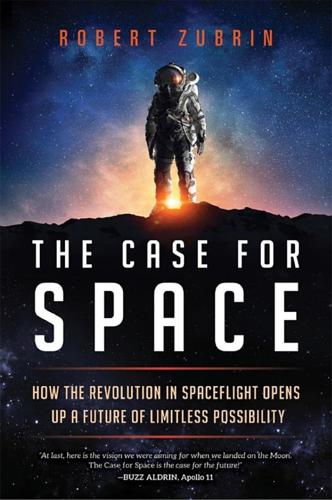
The Case for Space: How the Revolution in Spaceflight Opens Up a Future of Limitless Possibility
by
Robert Zubrin
Published 30 Apr 2019
Nevertheless, the value of helium-3 is so high that studies indicate that it could be well worth mining, even at such low concentrations. So, with all that in mind, how do we win the moon? I've already laid out the basic plan. Now let's discuss the details. The Apollo program utilized the Lunar Orbit Rendezvous (LOR) plan, in which only a lightweight Lunar Excursion Module (LEM) went to the surface and back while its command module mother ship remained in orbit to reduce overall mission mass. However, if the objective is to establish a permanent lunar base, not just perform sorties to the moon, then the production of lunar hydrogen and oxygen propellants must perforce be an early base priority.
…
km/s: Kilometers per second. kW: Kilowatts. kWe: Kilowatts of electricity. kWe-hr: The total amount of energy provided by one kilowatt of electricity for one hour. kWh: The total amount of energy associated with the use of one kilowatt for one hour. m/s: Meters per second. LEO: Low Earth orbit. LOR: Lunar Orbit Rendezvous. LOX: Liquid oxygen. magsail: A magnetic sail (see magnetic sail). magnetic sail: A device for propelling spacecraft using the pushing force of plasma on a magnetic field. MAV: Mars Ascent Vehicle. methanation reaction: A chemical reaction forming methane. In the Mars Direct mission, the methanation reaction is the Sabatier reaction, in which hydrogen is combined with carbon dioxide to produce methane and water.
…
See low Earth orbit Lerner, Eric, 180 Letters from an American Farmer (Crèvecoeur), 274 LEV (Lunar Excursion Vehicle), 70, 71, 79–81 chart of range and lunar accessibility, 81 LeVerrier, Joseph, 152 Lewicki, Chris, 138 Lewis, John, 136, 138, 150 life, search for, 12–14, 254–55, 297 anthropic principle, 261 See also extraterrestrials, search for; intelligence, search for Life of the Cosmos, The (Smolin), 262 light sails, 195–201 cannot thrust to the sun, 206 thin solar sails for interstellar travel, 197–99, 198 use of mirror effect, 203 Limited Nuclear Test Ban Treaty (1963), 186–87 limited-resources views, 301–305, 308 “carrying capacity,” 313–14 Lindbergh, Charles, 29 liquid oxygen (LOX). See LOX (liquid oxygen) lithium, 86, 87 Livermore National Lab, 175, 190, 293 Lockheed Martin, 11, 37, 107 “Compact Fusion Reactor” project, 180 as Martin Marietta, 22 United Launch Alliance, 35, 36 LOP-G (Lunar Orbit Platform-Gateway aka Deep Space Gateway), 71, 74, 329–30 LOR (Lunar Orbit Rendezvous), 74, 75 Los Alamos National Lab, 175, 186, 293 Lovelace, Ada, 233–34, 234 low Earth orbit (LEO), 58, 69–71, 108, 109, 111 delta-v needed to leave and go to Mars or beyond, 92–93, 131–32 and nonrotating tether spacecraft system, 96–97 refueling rockets in, 107 LOX (liquid oxygen), 165, 342 LOX/kerosene propellant, 37–38 LOX/propylene propellant, 37 Lunar Excursion Module (LEM), 74, 76, 77 Lunar Excursion Vehicle (LEV), 70, 71, 79–81 building a lunar base on the moon, 81 Lunar Orbit Platform-Gateway (LOP-G) (aka Deep Space Gateway), 71, 74, 329–30 Lunar Orbit Rendezvous (LOR), 74, 75 Lunar Prospector mission, 73 Lunar Reconnaissance Orbiter, 73 Lutetia (asteroid), 130 LUVOIR (Large Ultra Violet Optical InfraRed Surveyor), 251 Lynx X-Ray Surveyor, 251 Lyra (constellation), 240 Ma, Jack, 176 Mach drive, 207 MagLIF, 180 Magnetic Confinement Fusion Propulsion System, plate 12 magnetic fields around asteroids, 129 around giant planets, 153 in fusion and propulsion systems, 84, 86, 159, 176–78, 179, 180, 188, 190–91, 344 magnetic mirrors, 84, 180 magnetic sails (magsail), 201–204, 204, 210, 342 cannot thrust to the sun, 206 magnetic traps, 84, 159, 160 “MagOrion,” 203 Malthus, Thomas and Malthusian theory, 302–303, 304, 305, 311 Manned Maneuvering Unit, 133 MarCO-A and MarCO-B CubeSats, 55 mariculture, 227, 229–30, 277, 317 Markusic, Tom, 38 Mars, 181 asteroids crossing orbit of, 126–27 chemistry for space settlers of, 146–50 colonization of (Mars Direct program), plate 7, 101–23 commercial benefits of, 114–17 “Dragon Direct” plan, 108 habitation module, plate 5 leading to a human asteroid mission, 131–32 need for low cost spaceflight, 25–26 as a new frontier for humanity, 277–79, 316 as a public-private enterprise, 328 raising families on Mars, plate 8 status of in vision of the year 2069, 317 status of in vision of the year 3000, 321 use of greenhouses, 101, 113, 115, 278 concerns about Martian microbes Earth, 119–23 delta-V needed to leave LEO and go to, 92–93, 107, 131 Earth-Mars length of trip, 109 European programs, 13 Founding Declaration of Mars Society, 335–37 life on, 13, 104, 120, 255 ways to learn about origins of life on Earth, 254–55 NASA's programs, 13, 14, 30, 104–106, 135, 148–49, 182, 257, 296 refueling NTRs, 296–97 “on the road to Mars,” plate 2 and SNC meteorites, 119–20, 343 and technological civilizations, 13, 25, 101, 114 terraforming of, 117–19, 217–19, 222–23 a photo of a Mars in the future, plate 14 water on, 14, 101, 102–103, 105–106, 109, 113–15, 117, 118, 120, 146–49, 218, 222, 297 “young Mars,” 218–19 Mars Desert Research Station, 30 Mars Direct.

The Moon: A History for the Future
by
Oliver Morton
Published 1 May 2019
In popular articles in the 1950s he had described how the first step in human space exploration was to build a space station in low Earth orbit that could then be used as a base for assembling the craft needed to go to the Moon, or to Mars, and as a place to transfer crews between ships built to go up and down through the Earth’s atmosphere and ships designed for the airlessness of space. Earth-orbit rendezvous was the same idea—but with the space station dropped so that all the assembly had to be done on the fly. In the end, a third option won out: lunar-orbit rendezvous. Once the mission got to the Moon, it would leave the engines, propellant and heat shield needed for the return to Earth in lunar orbit. The astronauts would go down to the lunar surface in a little spacecraft designed specifically for that purpose. That reduced the amount of mass that had to go down to the Moon and, crucially, the amount that had to be brought back up.
…
When the LM came back up from the Moon, the same coupling had to be re-established so that the Moonwalkers could rejoin the pilot in the command module before the service module’s engine sent all three of them home. Each manoeuvre was an opportunity for something to go wrong. But some slightly tricky piloting seemed a fair exchange for not having to build a monster like the Nova. Without the lunar-orbit rendezvous, it is highly unlikely that Apollo would have made it to the Moon before the 1970s—or, quite possibly, at all. At the same time, looking back, it marked something of a loss. The minimisation of infrastructure that made it so appealing meant it left no legacy—there was no space station, as there might have been if a slower, more orderly approach to the Moon had been taken.
…
It was stretching the best minds in American aerospace to their limits and necessitating new ways of thinking and working across the continent—across the world, when you considered the telecommunications infrastructure required to keep track of the spacecraft. But it was also intimate. Part of making lunar-orbit rendezvous work was making the spacecraft that actually went down to the Moon, the LM, as light as possible. In the original specification it was to weigh just ten tonnes. During development, it put on weight, despite furious attempts first to arrest and then to reverse the process. But it remained pretty tiny.
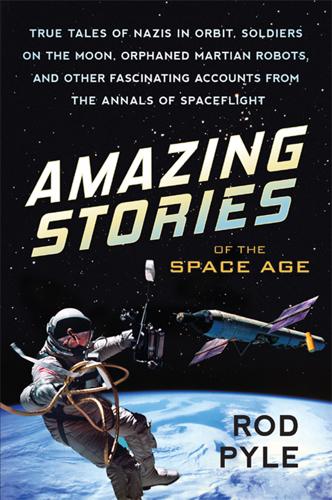
Amazing Stories of the Space Age
by
Rod Pyle
Published 21 Dec 2016
The ERV was intended to handle reentry speeds up to Mach 35, and was thought to have been reusable if properly engineered.3 Fig. 5.2. Schematic view of the US Air Force's LUNEX lander and crew vehicle. This was a variation on NASA's early designs for the Apollo program, in which the same craft that left Earth would land on the moon and return the crew to Earth. NASA later adopted the “lunar orbit rendezvous” approach, with a separate crew capsule and lunar lander, both of which were single-use spacecraft. The air force, of course, wanted a winged vehicle that would be flown by pilots, which was more aligned with their tradition of flight. Image from DOD/USAF. The booster for the ERV was a large cryogenic rocket, fueled by liquid hydrogen and liquid oxygen, as the Saturn V's upper stages (and later space shuttle) were.
…
There was mention in the final report, issued in 1961, of considering an Earth orbit rendezvous (EOR) mission design, in which components of the lunar craft would be assembled in orbit with multiple launches, again roughly parallel with NASA's mission planning (NASA would settle, with some reluctance, on the more economical single-launch lunar orbit rendezvous, in mid-1962). To give credit where it is due, the plan did identify a few more potential complications than the hastily completed Project Horizon document had. Tail-first landing was one; reentry of the lifting body was mentioned as well. But a program of incremental steps, including robotic reconnoitering of the moon and the placement of landing beacons, was expected to overcome these potential problem areas.
…
The command modules and lunar modules needed for the lunar landings would require work right up until the last moment, and construction of the Saturn V was essentially complete. No new large-scale spacecraft orders were coming from the Johnson administration. The last straw the contractors and NASA could clutch at was a Mars and/or Venus flyby using Apollo hardware. There would be no Nova booster (it had not been needed since the decision to use the lunar orbital rendezvous approach for Apollo), no gliding Earth Return Vehicles, and no nuclear rocket engines. We had Saturn Vs, command/service modules, as well as a flexible architecture in the Saturn's third stage, the S-IVB. This stage, the top stage on the Saturn V's lunar configuration or “stack,” would ultimately be used to build the Skylab space station in 1973.
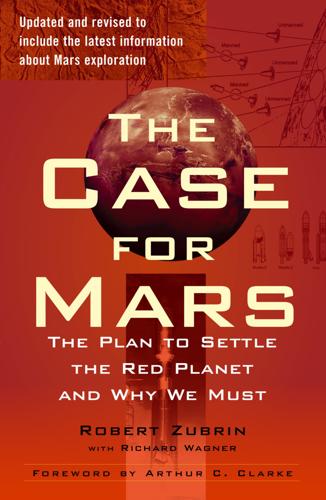
Case for Mars
by
Robert Zubrin
Published 27 Jun 2011
See Low-earth orbit (LEO) Levin, Gilbert, 33, 34 Lewis, John, 225, 226 Lewis and Clark expedition, 6 Lewis Research Center, Cleveland, 103 Life Sciences Company, 151 Life-support system, 7, 82, 83, 91, 94, 100, 131, 146, 153 Lindbergh, Charles, 283 Lindstrom, Marilyn, 311 Linne, Diane, 43 Lockheed Martin Corporation, 284 LOFT, 103 LOR. See Lunar orbital rendezvous (LOR) plan Low-earth orbit (LEO), 49, 53, 56, 87, 88, 96, 103, 105, 108, 136, 233, 234 Lowell, Percival, 26–27, 185 Lowell Observatory, Flagstaff, Arizona, 26 Lunar missions, 13, 45, 46, 48–50, 135–137, 184, 220–223. See also Apollo program Lunar orbital rendezvous (LOR) plan, 50 Lunar rovers, 142, 143 MacKenzie, Bruce, 173, 176 Maechling, Claude, 314 Magellan spacecraft, 52, 97 Magnesium oxide, 220 Magnetic sails, 101, 234, 243–245 Magnetite, 317, 318 Main Belt asteroids, 226–230 Malthusianism, 303 Mandell, Humbolt “Hum,” 68 Manganese, 200 Manned Orbiting Laboratory, 150 MAR See Mars Aerial Platform (MAP) mission Mariner program, 27–30, 82, 87, 130, 131, 140, 157, 170 Marquardt Company, 241 Mars.
…
km/s: kilometers per second. kW: kilowatts. kWe: kilowatts of electricity. kWe-hr: The total amount of energy associated with the use of one kilowatt of electriciy for one hour. kWh: The total amount of energy associated with the use of one kilowatt for one hour. LEO: Low Earth orbit. LOR: Lunar orbit rendezvous. LOX: Liquid oxygen. MAV: Mars ascent vehicle. Methanation reaction: A chemical reaction forming methane. In the Mars Direct mission, the methanation reaction is the Sabatier reaction in which hydrogen is combined with carbon dioxide to produce methane and water. MHz: megahertz, a measure of frequency used in radio.
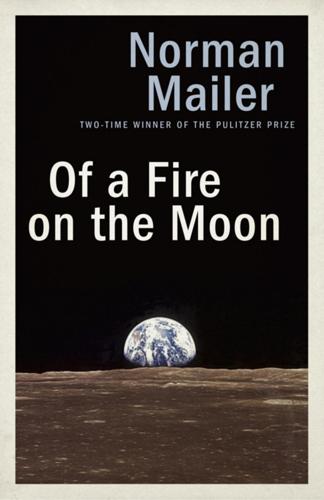
Of a Fire on the Moon
by
Norman Mailer
Published 2 Jun 2014
The hostility of others was intense. There was no question that in terms of economy of performance, the idea of Lunar Orbit Rendezvous was clearly superior to Earth Orbit Rendezvous, but more than bureaucratic rigidity was at stake. One can assume that a number of the most practical men at NASA did not really believe in 1961 that we would get to the moon by 1969. Still, they were rocket men who were attached to the idea of a continuing rocket program. A complete commitment to Lunar Orbit Rendezvous would show a complete loss if they failed to get to the moon. But Earth Orbit Rendezvous, under the guise of going to the moon, was the perfect program for developing a technology which would certainly result in elaborate space stations orbiting the earth.
…
Going to the moon would be the most monumentally expensive gesture ever made, it would change the dreams of man himself, but it would not put an eye on the activities of the Russians, nor from the point of view of many scientists would a manned moon landing mean nearly as much as a space station for astronomical observations free of the earth’s atmosphere. Or a space factory for electronic components best manufactured in a vacuum. So it may be that Houbolt’s struggle to get Lunar Orbit Rendezvous approved was in fact one side of an undeclared war in the minds of NASA officials to decide whether they really wished to commit themselves to the moon. It could be said that when Von Braun changed his mind, and Houbolt’s scheme was soon after approved, that the lunar program had then truly begun.
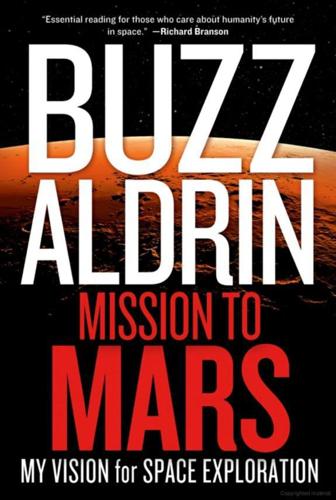
Mission to Mars: My Vision for Space Exploration
by
Buzz Aldrin
and
Leonard David
Published 1 Apr 2013
In reacting to President Kennedy’s goal of landing a man on the moon by decade’s end, there were many alternatives discussed as to how we could get there and return to Earth. A very gifted NASA engineer, John Houbolt, trumped even the revered U.S. space program leader, Wernher von Braun, who favored a huge monstrous rocket, a multipurpose spacecraft, and direct flight to get to the moon and back. Houbolt backed a lunar-orbit rendezvous plan. It called for not a multipurpose crew vehicle architecture but a segmented way to achieve the moon landing feat. When the Apollo moon landing method was finally scripted, it adopted segmentation of the mission: using an Apollo command module as discreet from the service module, and segmenting the lunar ascent stage from the lunar descent stage.
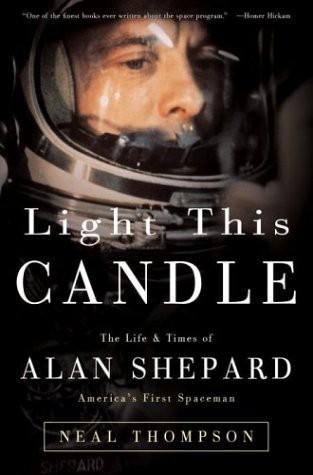
Light This Candle: The Life & Times of Alan Shepard--America's First Spaceman
by
Neal Thompson
Published 2 Jan 2004
The “earth-orbit rendezvous” theory called for launching two rockets, one carrying the astronauts’ capsule and another carrying an extra engine full of fuel; that engine would be attached to the astronauts’ capsule while they orbited the earth, and then used to propel them to the moon. But there was one “voice in the wilderness,” as NASA engineer John Houbolt called himself, who had a completely different plan. Houbolt called his theory “lunar-orbit rendezvous.” It called for a two-piece mothership—the bell-shaped command module and the cylindrical service module beneath that—to reach and then leave earth orbit, at which point a spidery lunar excursion module, or LEM (whose acronym was later shortened to LM, but was still pronounced “lem”), would be released from a “garage” of sorts (actually, the Saturn rocket’s third stage) beneath the service module; the command module would then turn 180 degrees so that it could attach to the nose of the lunar module.
…
At the time the concept seemed so bizarre that Houbolt suffered the ridicule of his peers and was dismissed by supervisors. Mission Control’s flight director, Chris Kraft, considered Houbolt “a madman with a mission.” But at a tense and historic meeting with von Braun in 1963 Houbolt was able to finally sell his method to the proud, stubborn German, and NASA officially selected lunar-orbit rendezvous as the wisest means of reaching the moon. NASA officials look back with wonder at those heady days and the powerful collusion of politics, technology, imagination, and youthful determination. “If Jack Kennedy had been older and wiser, he would never have committed us to the moon. The same was true for all of us,” Kraft said years later.

Voyage
by
Stephen Baxter
Published 23 May 2011
And at each encounter the accuracy of positioning will have to be of the order of a few hundred miles, after traveling tens of millions. How can we navigate so accurately? Why, we haven’t yet proved we can manage a single swing-by on such a scale.” “But we will,” Dana insisted. “Remember, NASA committed to the lunar-orbit rendezvous mode for Apollo — which required a rendezvous a quarter of a million miles from home — before a single space rendezvous had been demonstrated.” There was some muttering at that. Hardly a valid comparison. “What about the design constraints? Near Venus the sunlight is four times hotter than at Mars, so you’ll be sacrificing payload space for a cooling system that will be deadweight at Mars.
…
But a hell of a stunt. It will put us right back on top of everything…” Jones talked about the training they’d already completed toward their Earth-orbital mission. “And what about the Russians?” The Soviets were proposing to dock a Soyuz ship with Skylab B in Earth orbit. “Changing that stunt around to a lunar-orbit rendezvous mission is a hell of a trick,” Jones said. “I mean, the Russkies haven’t lifted a single cosmonaut out of Earth orbit yet.” “The Soviets still say they’ll have at least a circumlunar capability in a couple of years — within the life of the station,” Seger said. “So we can get around that.
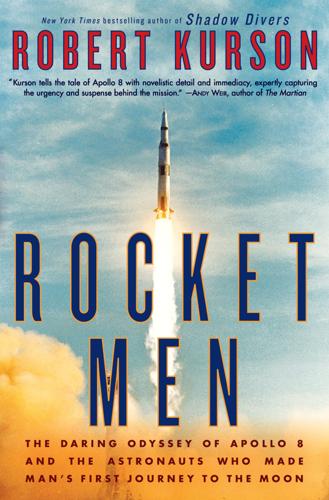
Rocket Men: The Daring Odyssey of Apollo 8 and the Astronauts Who Made Man's First Journey to the Moon
by
Robert Kurson
Published 2 Apr 2018
If the engine doesn’t work, we’ve had a bad day.” NASA had considered a plan for a lunar rescue mission should something catastrophic happen. It involved sending a single astronaut to the Moon in his own command and service module, atop his own Saturn V, which would stand ready to launch at Cape Kennedy. Once in lunar orbit, rendezvous and rescue would involve complex maneuvers that would also place the rescuing astronaut at risk. Such a contingency would add significantly to the agency’s already massive budget. In the end, the idea was scrapped. NASA hadn’t bothered training the astronauts on how to handle being stranded at the Moon, or being flung off irretrievably toward the Sun, or any other hopeless scenario.

Boom: Bubbles and the End of Stagnation
by
Byrne Hobart
and
Tobias Huber
Published 29 Oct 2024
Not only did this enable orthogonal thinking and rapid iterative testing of new methods and materials, but, in the case of Apollo 13, it also allowed Mission Control and flight directors to find highly creative engineering solutions for averting a disaster in space. By contrast, when the Challenger exploded in 1986, NASA was heavily reliant on data communication and visualization protocols, hierarchy, and a culture of conformity, all of which were implicated in the accident. 195 Lunar-orbit rendezvous (LOR) was another Apollo mission idea that probably would have been killed by a top-down bureaucratic hierarchy averse to multi-disciplinary and unconventional thinking. The brainchild of the brilliant and extremely persistent Langley Research Center engineer John Houbolt, the idea behind LOR was that the lunar lander would decouple from the main spacecraft, which would remain in lunar orbit, to independently descend to the surface of the Moon.
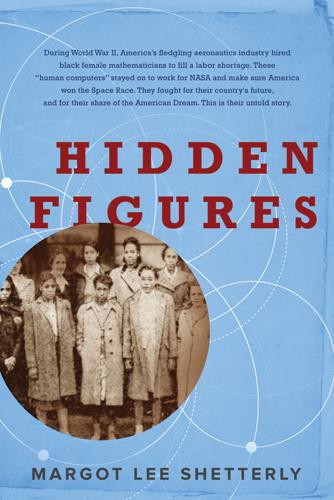
Hidden Figures
by
Margot Lee Shetterly
Published 11 Aug 2016
At the Transonic Dynamics Tunnel, Thomas Byrdsong got a head start on the long road to the Moon by testing a model of the Saturn rocket, a launch vehicle the size of a redwood tree. Engineer Jim Williams, still on the team with John D. “Jaybird” Bird, was already helping to work toward President Kennedy’s pledge of a Moon landing. The division would be associated with lunar orbit rendezvous, one of the most ingenious and elegant solutions to the challenge of propelling extraordinarily heavy objects on the several-hundred-thousand-mile journey to the Moon and back. West Computing no longer existed as a physical space, but its alumni pushed their minds and hands in the service of the space program—though in Dorothy Vaughan’s case, it was an indirect effort.
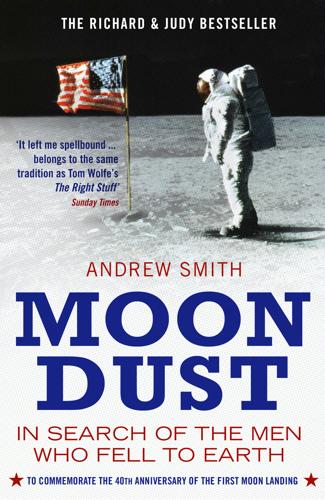
Moondust: In Search of the Men Who Fell to Earth
by
Andrew Smith
Published 3 Apr 2006
A more palatable option was to establish a base in Earth orbit, from which to assemble and launch smaller, simpler ships at Luna. This elegantly incremental scheme became known as Earth Orbit Rendezvous (EOR) and eventually won von Braun’s support, meaning that an outsider engineer named John Houbolt who floated the idea of “Lunar Orbit Rendezvous” (LOR) was ridiculed and dismissed as a crank in the first instance. LOR was complex and would rely on a range of unproven techniques. It meant sending two ships into Earth orbit, piggybacking them to the Moon, separating in lunar orbit so that one might drop to the surface, blast back up, rendezvous and dock with the first craft, then come back together.
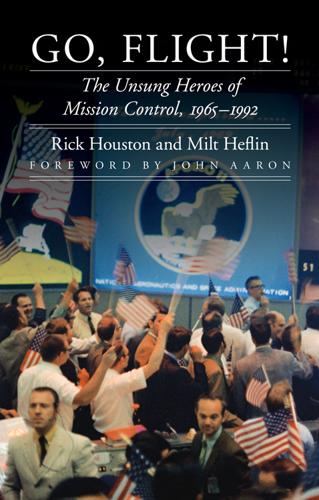
Go, Flight!: The Unsung Heroes of Mission Control, 1965-1992
by
Rick Houston
and
J. Milt Heflin
Published 27 Sep 2015
“NASA: Excerpt from the ‘Special Message to the Congress on Urgent National Needs’: President John F. Kennedy, Delivered in Person before a Joint Session of Congress, May 25, 1961, Section IX: Space.” NASA, 24 May 2004. http://www.nasa.gov/vision/space/features/jfk_speech_text.html#.UtAEN7QSiN8. O’Brien, Frank. “Lunar Orbit Rendezvous.” Apollo Flight Journal. Last updated 1 January 2005. http://history.nasa.gov/afj/loressay.htm. Ong, Elwin C. “Profile Apollo: Hugh Blair-Smith.” NASA Office of Logic Design, 10 April 2005. http://klabs.org/history/bios/hugh_blair_smith/elwin_mit_report.htm. Saxon, Wolfgang. “Scott Simpkinson, 76, Engineer Who Worked on Space Program.”